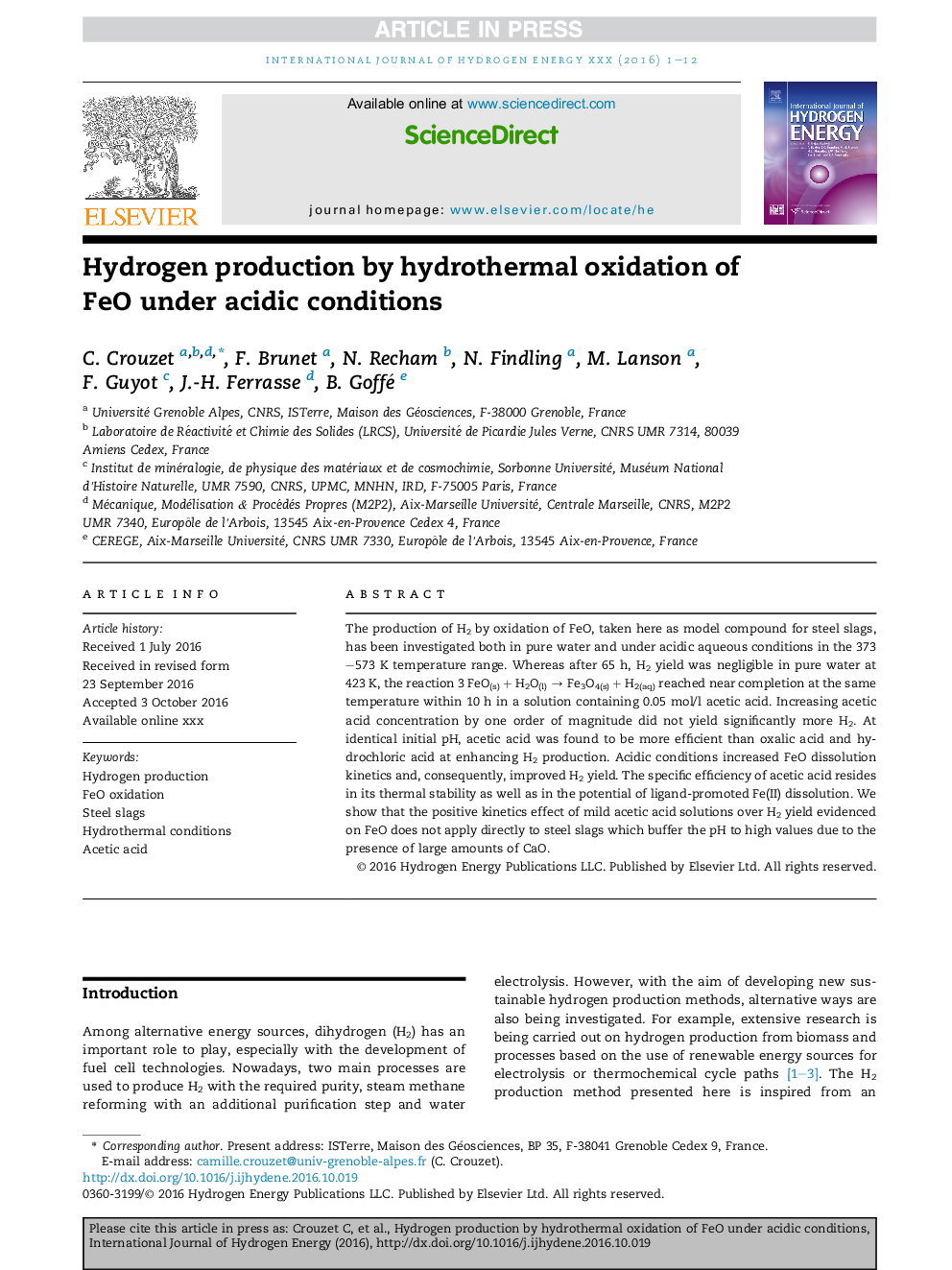| Article ID | Journal | Published Year | Pages | File Type |
|---|---|---|---|---|
| 5146682 | International Journal of Hydrogen Energy | 2017 | 12 Pages |
Abstract
The production of H2 by oxidation of FeO, taken here as model compound for steel slags, has been investigated both in pure water and under acidic aqueous conditions in the 373-573 K temperature range. Whereas after 65 h, H2 yield was negligible in pure water at 423 K, the reaction 3 FeO(s) + H2O(l) â Fe3O4(s) + H2(aq) reached near completion at the same temperature within 10 h in a solution containing 0.05 mol/l acetic acid. Increasing acetic acid concentration by one order of magnitude did not yield significantly more H2. At identical initial pH, acetic acid was found to be more efficient than oxalic acid and hydrochloric acid at enhancing H2 production. Acidic conditions increased FeO dissolution kinetics and, consequently, improved H2 yield. The specific efficiency of acetic acid resides in its thermal stability as well as in the potential of ligand-promoted Fe(II) dissolution. We show that the positive kinetics effect of mild acetic acid solutions over H2 yield evidenced on FeO does not apply directly to steel slags which buffer the pH to high values due to the presence of large amounts of CaO.
Related Topics
Physical Sciences and Engineering
Chemistry
Electrochemistry
Authors
C. Crouzet, F. Brunet, N. Recham, N. Findling, M. Lanson, F. Guyot, J.-H. Ferrasse, B. Goffé,
